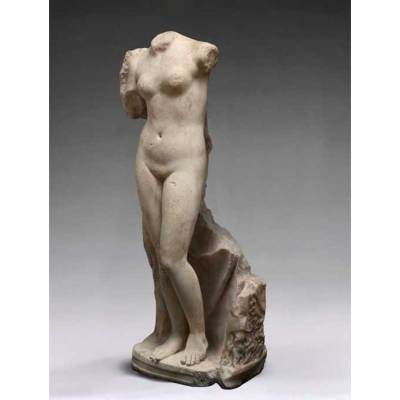Caspar Wolf was one of the first artists to see the full dramatic potential of the Alps, and a leading figure in the rise of the artistic Sublime. A new exhibition of 126 of the artist’s paintings, often alongside recent photographs of the mountain sites, opens this week at the Kunstmuseum Basel. We spoke to one of the curators, Katharina Georgi, to find out more.
Click here for a gallery of highlights from the exhibition
Can you tell us a bit about the exhibition?
Although Caspar Wolf has been stamped ‘pioneer of Alpine painting’, he was of course not the first artist to paint mountain views. Yet, he was the first painter to venture systematically into regions that people had hardly set foot on before. It was not the picturesque views of idyllic settings that were in the centre of Wolf’s attention; he was on the look-out for the direct encounter with the wild, uncivilised world of the mountains, for the ‘sublime’, to use the jargon of the time. The artists that inspired Wolf along his way were not his Swiss colleagues. As our exhibition shows, it was his sojourn in Paris in 1770–71 that set everything in motion.
What makes this a distinctive show?
Our aim is to show how Wolf mastered the challenge to create a new artistic language for motifs that had never been painted before. Like the vastly stretching glaciers or oppressive rock faces. Visitors will be able to follow the artist in his constant search for a compromise between a realistic depiction of what he saw, a personal view of the psychological effect this scenery must have had on him, and the established late baroque rules of landscape painting.
To illustrate this, we juxtapose some of Wolf’s compositions with photographs which we took during the summer together with a professional photographer, and which show the locations where Wolf painted. This is a playful way of looking at Wolf, but one highly revealing for assessing his role as a composer of landscapes.
 How did you come to curate this exhibition?
How did you come to curate this exhibition?
There is a substantial number of paintings and drawings by Caspar Wolf that belong to the collection of the Kunstmuseum. Moreover, in 2010 we received a donation of two rather unusual canvasses: A pair of hunting pieces, very decorative compositions, dramatically orchestrated – but miles away from Wolf’s Alpine motifs. This made us want to look closer at this artist. How did he come to be the innovative painter of the Alps? Where did he start from, artistically speaking?
What is likely to be the highlight of the exhibition?
This is hard to say as Wolf’s Alpine views were conceived as a series rather than individual masterpieces. What I think a particularly fascinating aspect of our exhibition is that it shows Wolf’s paintings alongside some of his preparatory oil sketches, which he painted on the spot, during his Alpine excursions. Thus visitors will get an insight into the artistic process.
And what’s been the most exciting personal discovery for you?
Although Caspar Wolf’s oeuvre is well documented, we made a number of unexpected discoveries. Thus, for instance, we are lucky to show one painting, whose whereabouts had been unknown since Wolf’s death in 1783. And I am convinced that there are yet further discoveries to be made, not only in Swiss collections.
How are you using the gallery space? What challenges will the hang/installation pose?
Wolf’s patron, Abraham Wagner, had conceived his commission as an ensemble that could be visited in a room of his private house in Berne. This is quite the opposite of our large and rather sober gallery space which is more fitting for modern art. We have tried to tackle this challenge by the wall colour. The pink we chose may be a rather unusual colour at first sight. However, it is typically found in the Age of Rococo, and it creates the kind of cabinet-like character that becomes Wolf’s paintings very well.
Which other works would you have liked to have included?
Honestly, none! The support of our lenders, both public and private, and in Switzerland as well as abroad, has been overwhelming. Eventually we have been able to include even more pictures than we had initially hoped for.
‘Caspar Wolf and the aesthetic conquest of nature’ is at the Kunstmuseum Basel until 1 January 2015.



